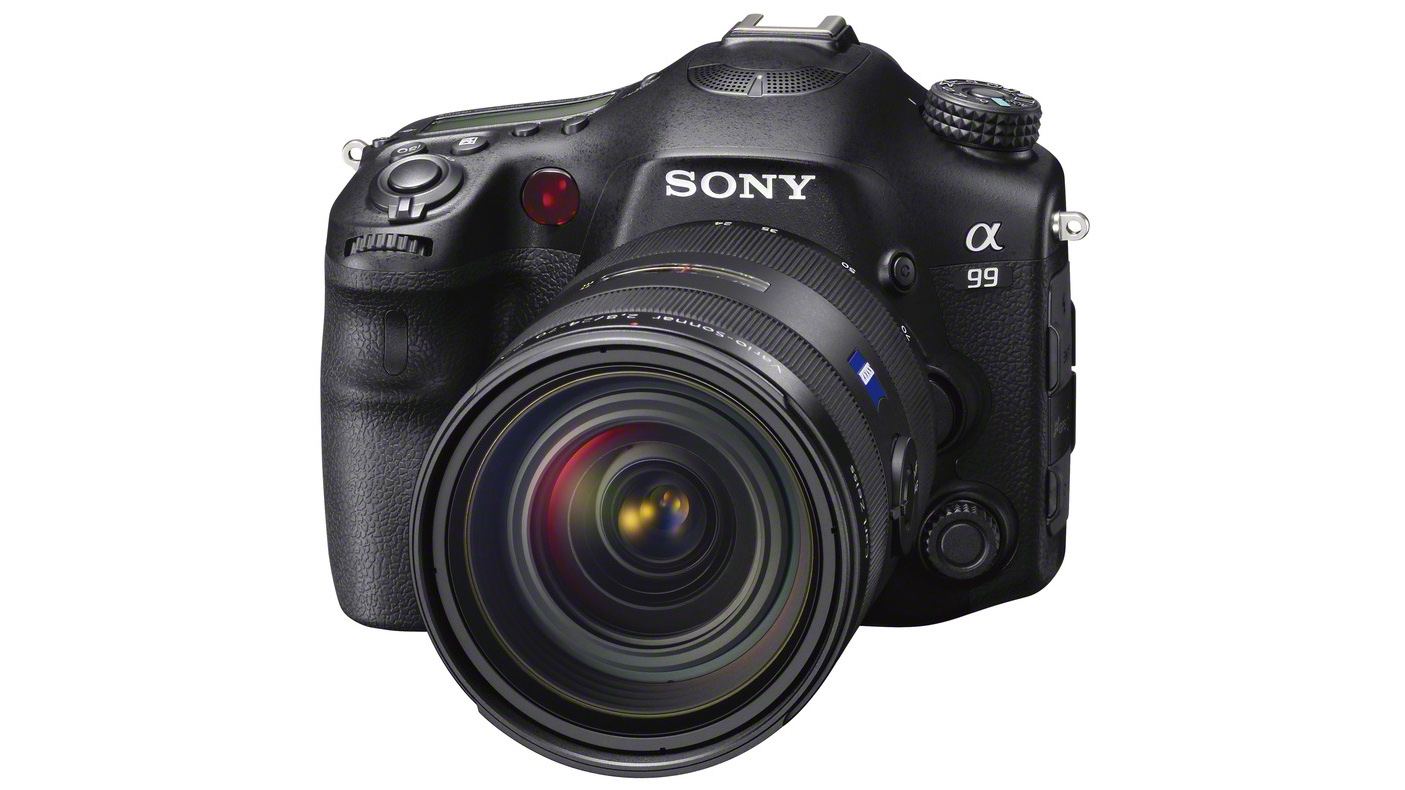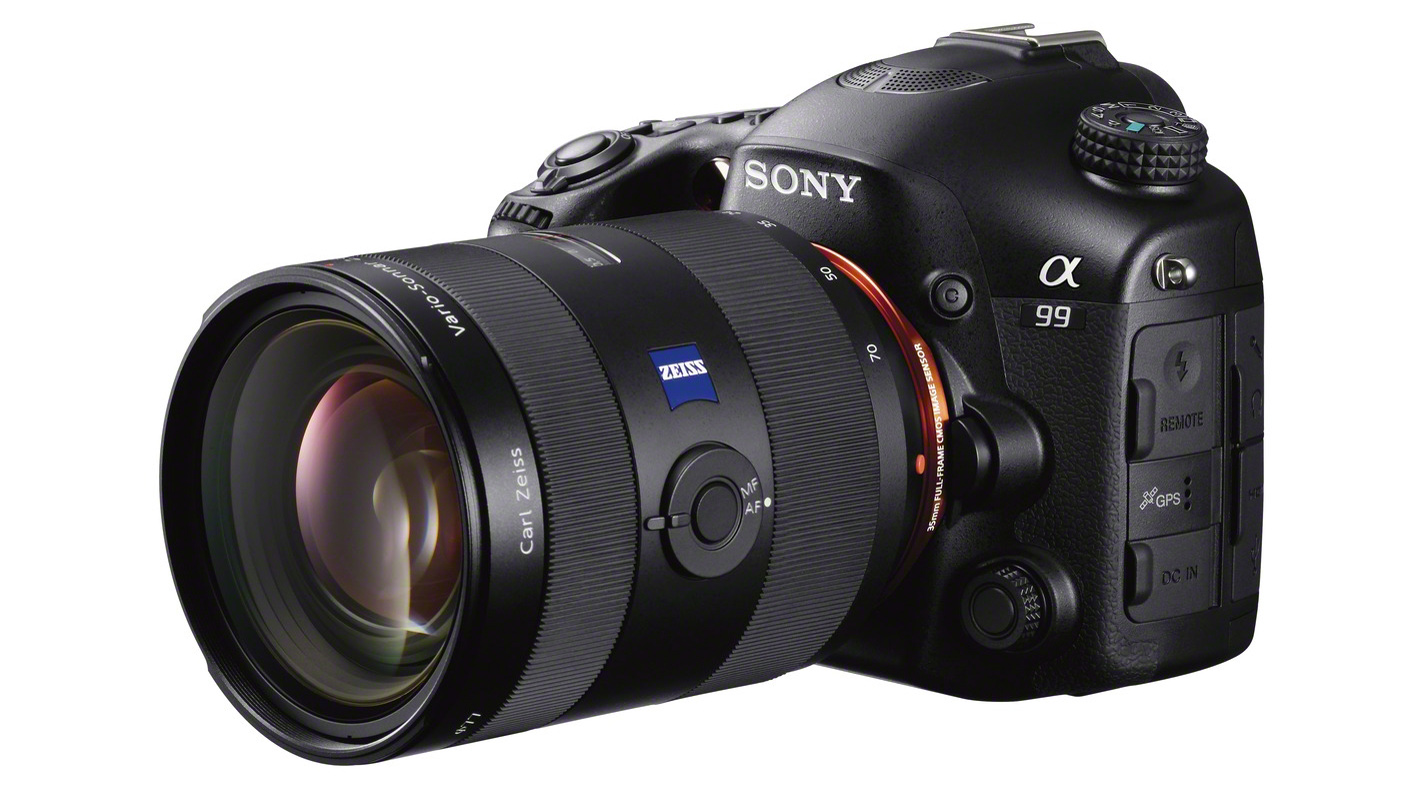Why you can trust TechRadar
Sony has given the Alpha a99 a magnesium alloy shell to make it light yet durable, and put seals around the control points and joints to keep out dust and moisture so the camera can withstand some exposure to inclement weather.
It feels well constructed and the deep fingergrip is comfortable in the hand, giving a secure hold.
There are lots of direct controls scattered across the camera's body, which speeds up making settings changes. However, there are one or two oddities.

A button on the back, for example, gives access to the Smart Teleconverter - a type of digital zoom. This seems a very strange use for a button on a camera that is designed for use by serious photographers. Fortunately it is customisable, so we used it to magnify a section of the screen when focusing manually.
There's also a rather unusual button and dial Silent multi-controller on the front of the camera beneath the lens release. This can be customised to access different features when shooting video and still photos, and it is specifically designed to enable you to make near silent camera adjustments during video recording. It delivers on this promise.
The multi-controller on the back of the camera will seem familiar to Sony PlayStation owners. It and the buttons covering the camera have a slightly squidgy feel with no distinct click, but they appear to be well made, and the camera responds promptly to their use.

In addition to the lengthy standard menu, there's a Function menu that is accessed by pressing the Fn button on the back of the camera. This provides access to 14 features including aspects such as drive mode, focus mode, white balance, sensitivity and picture effect.
Sign up for breaking news, reviews, opinion, top tech deals, and more.
Image format is an annoying omission, because features such as picture effect and auto portrait framing can't be used when shooting raw files.
Although an error message explains this if either of the options are selected when shooting raw images, you have to delve into the main menu to change to JPEG only shooting. Surely it should be possible to have the option to change the file format via the error message?

It's also a little disappointing that Sony hasn't given the Sony Alpha a99 a 'my menu' screen to assign your favourite or most commonly used features to.
It seems odd that the Function menu isn't customisable like it is on the Sony NEX-6. However, there are lots of customisation options available for the buttons.
When the LCD screen's brightness is turned up, or it's set to its Sunny Weather setting, it provides a clear view even in direct (UK November) sunlight.

The viewfinder is also very detailed, but it could do with a better eye-cup in bright weather to shield you from glare from the sun. It also has the tendency to make the scene look warmer and more contrasty than the captured image - even when that image is viewed in the finder.
A sensor next to the EVF detects when the camera is held to the eye and automatically turns it on while switching off the LCD screen.
With the Eye-Start AF option enabled via the menu, the camera also starts to focus the lens as soon as the camera is held to the eye, which we find useful in most situations.

In another first for a full-frame camera, the Sony Alpha a99's 3-inch 1,228,000-dot LCD screen is mounted on a tilting/articulating hinge to make it easier to see from a range of angles.
It's useful, but the hinge is an odd one, and while it works well when shooting horizontal images, it can take a while to get it in a convenient position for upright images.
At first it may seem that the camera is slow to power up, but we found that although the top LCD takes a couple of seconds to come to life, the EVF starts up smartly and the camera is ready for use pretty quickly.
